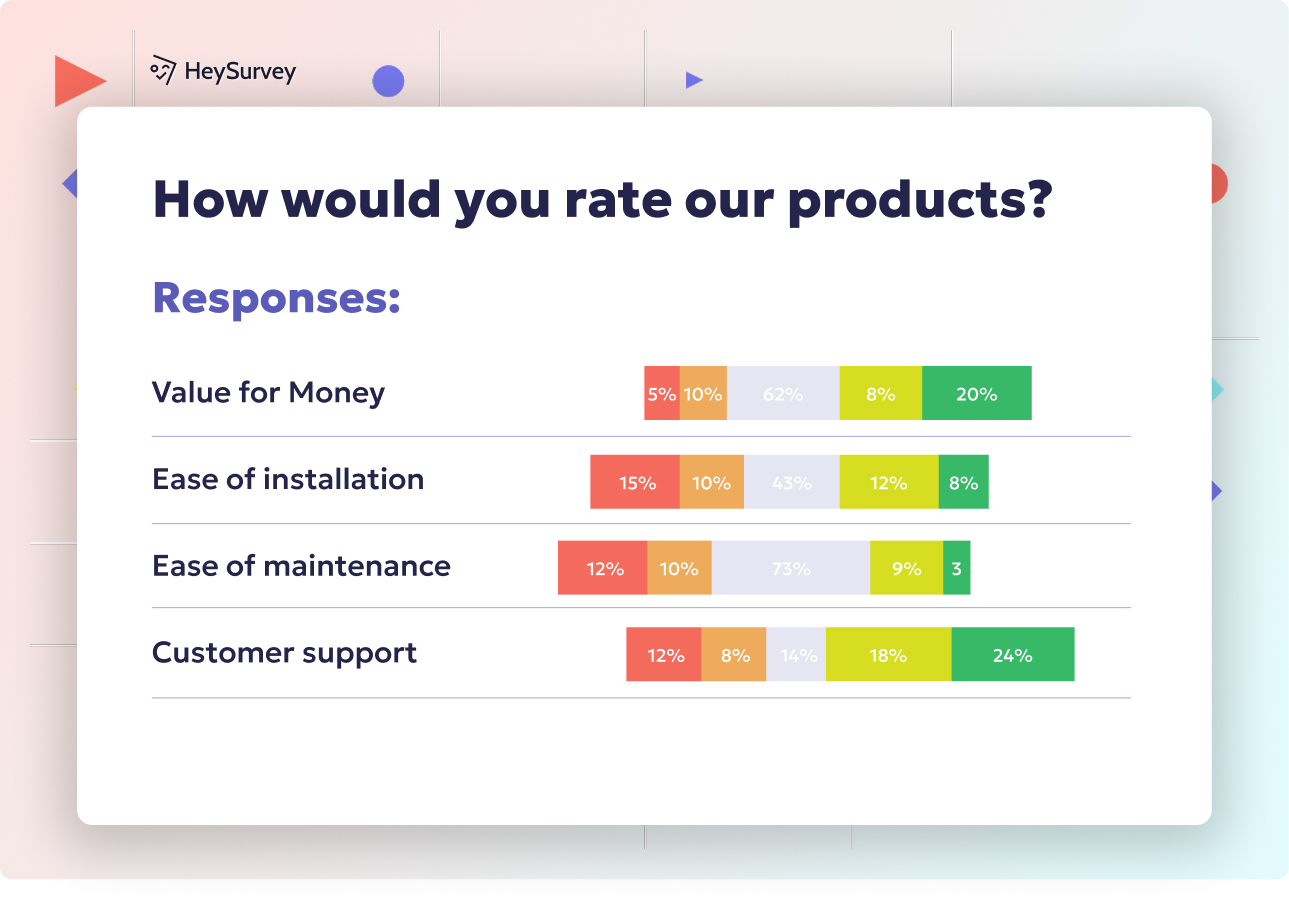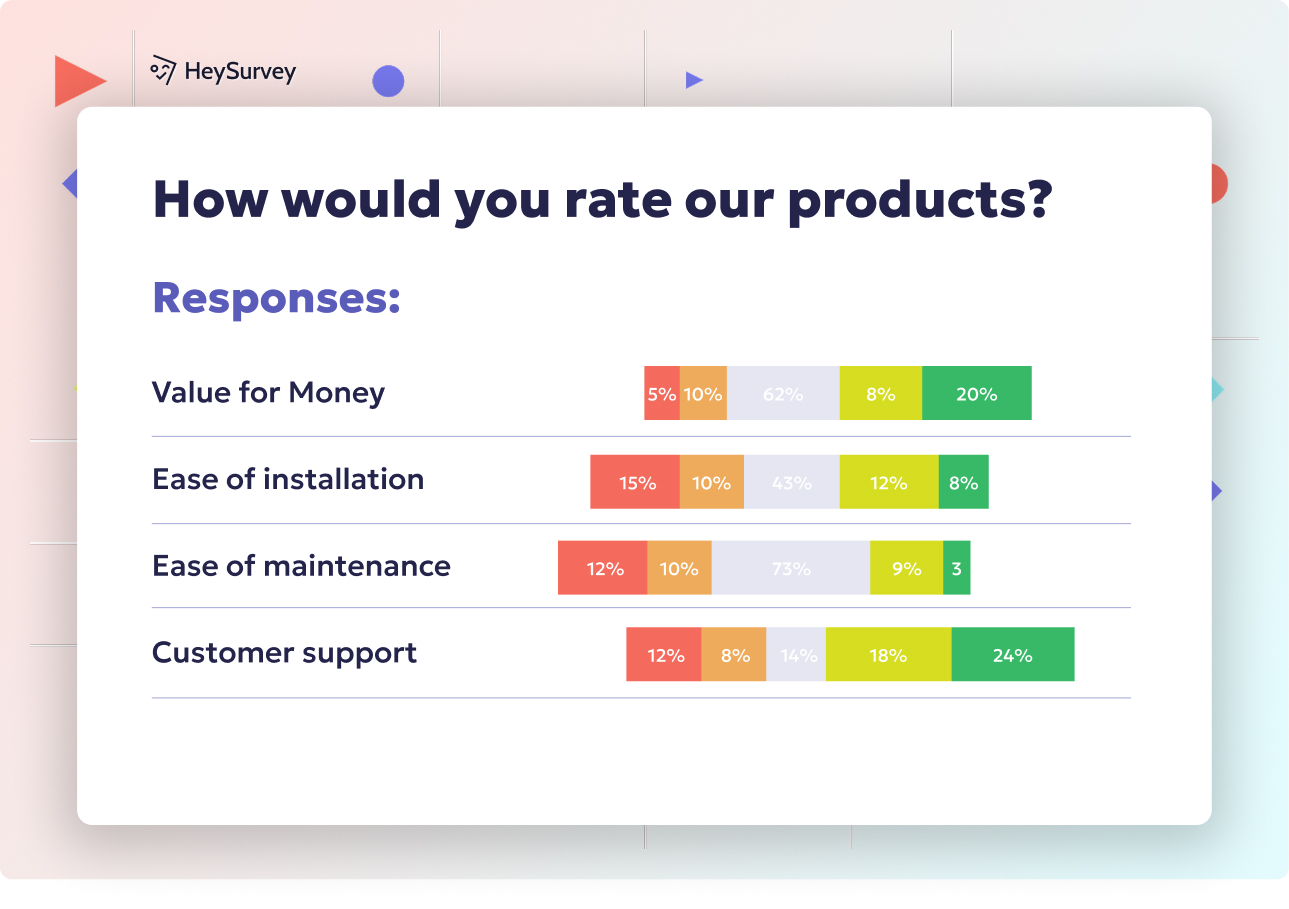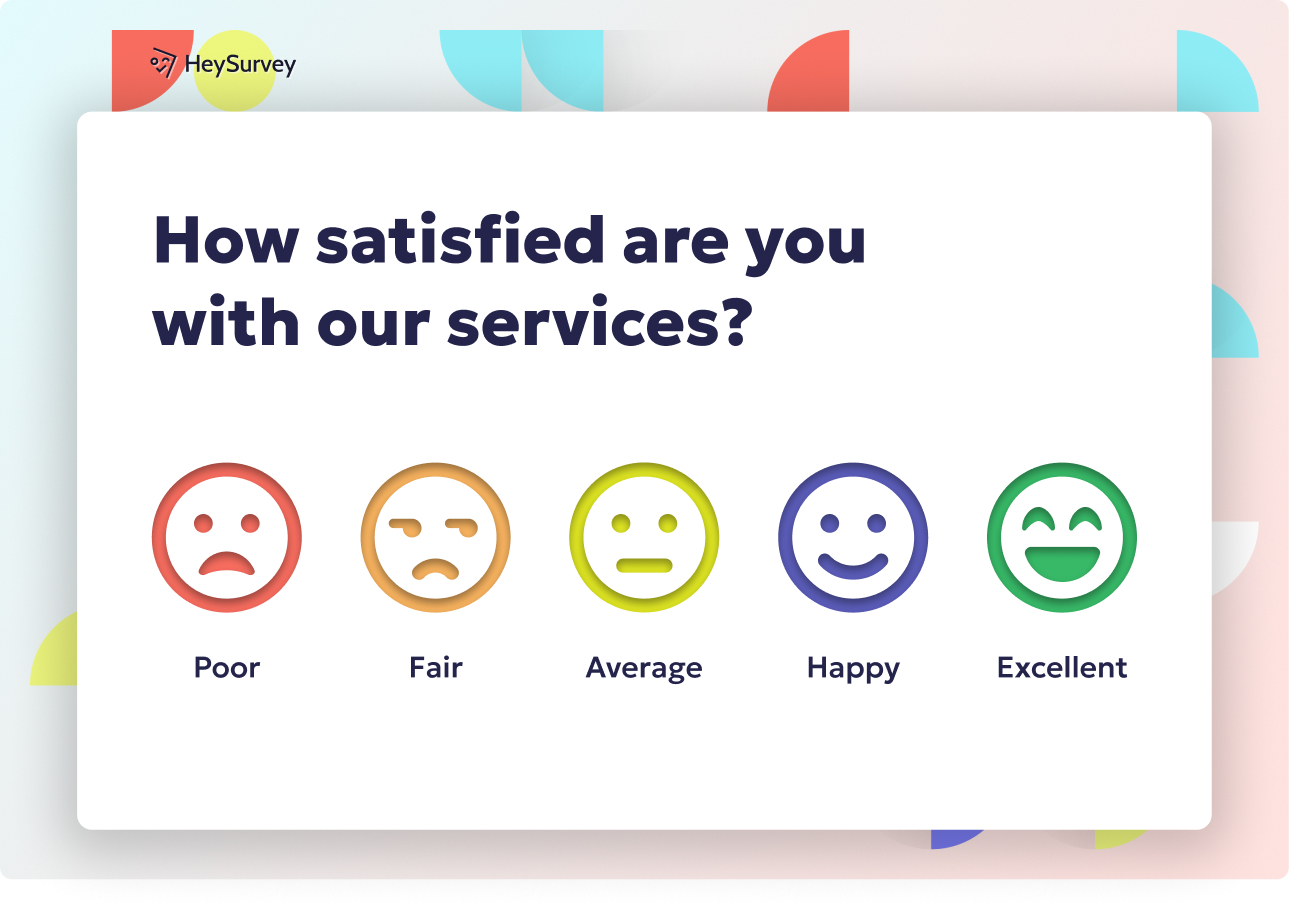32 Survey Questions for Presidential Election: Complete Guide
Explore 45 essential survey questions for presidential election, including 25 sample questions to capture voter preferences, turnout, and messaging.
Every four years, the art and science of the presidential election survey comes to life. Well-written survey questions reveal voter moods, predict turnout, craft campaign strategies, and even nudge the national conversation. Whether pollsters are pulse-checking before a debate or developing sharp “Get Out The Vote” (GOTV) tactics, the design of each voter opinion poll is a hidden powerhouse. Read on, and discover how the small but mighty candidate preference questions, smart likely voter screening, and other expert approaches shape what we know—and what candidates do next!
Likely Voter Screening Questions
Why & When to Use
Knowing who will really show up to vote is what separates a sparkling data set from a big, squishy guess. That’s why likely voter screening is the secret sauce of any election polling best practice. Only the opinions of those who actually cast a ballot can tilt a race or confirm a momentum shift. These screening questions are especially potent four to twelve weeks before Election Day, helping campaigns and pollsters clear away the noise.
- These questions weed out the well-meaning wishful thinkers, and spotlight the determined doers who will drive results.
- Voter screens become high stakes as GOTV efforts gear up and every percentage point matters.
- Using likely voter metrics early helps avoid polling surprises and sudden swings in media narratives.
Not only do likely voter questions increase survey accuracy, but they also help campaigns target resources, like ads or volunteer knocks, to those who are truly persuadable and ready to participate. They keep energy focused on real turnout, not just armchair opinions.
5 Sample Questions
How certain are you that you will vote in the upcoming presidential election—absolutely certain, probably will vote, 50/50, or unlikely?
In the last two presidential elections, how many times did you vote?
Are you currently registered to vote at your present address?
Do you know the location of your polling place or have you requested a mail-in ballot?
On a scale of 1–10, where 10 is ‘definitely will vote’, how likely are you to cast a ballot this November?
Each screen filters respondents, ensuring every statistic is just a bit sharper, and every headline a little more truthful. When it comes to predicting results, these questions are the sharpest arrows in the pollster’s quiver.
A Pew Research Center study found that traditional likely voter models, using an eight-item index assessing voting preferences, past behavior, and campaign interest, correctly predicted the voting behavior of 73% of registered voters. (pewresearch.org)

Creating your own presidential election survey with HeySurvey is a breeze—even if you’re totally new to the platform. Follow these three simple steps to launch an engaging and effective survey. When you’re ready, you can open a ready-made template right below this guide to jumpstart your project!
Step 1: Create a New Survey
- Head to the HeySurvey dashboard and click “Create Survey.”
- Choose whether to start from an empty sheet or pick a pre-built template designed for election polling. Templates save time and include common question types already wired up.
- Give your survey an internal name so you can easily find it later—this won’t be visible to respondents.
Voilà! You have a basic survey shell ready for your customization adventure.
Step 2: Add Questions
- Hit the “Add Question” button at the top or between existing questions.
- Select question types like Choice for candidate preference or Scale for likelihood to vote. You can easily input your question text, add answer options, and mark questions as required to avoid any skipping.
- Remember to include Likely Voter Screening questions early on to filter your respondents.
- Use branching if you want certain questions to appear only based on previous answers—perfect for tailoring follow-ups.
- Spice up your survey by adding images or formatting question text using markdown for emphasis and clarity.
This step is where your survey transforms from blank canvas to a finely tuned voter sentiment tool.
Step 3: Publish Survey
- When your questions look great, click “Preview” to see the survey from a respondent’s viewpoint.
- Open the Designer Sidebar to customize the look — change colors, fonts, or layouts for a polished and mobile-friendly design.
- Once satisfied, hit “Publish.” Note: You’ll need to create a free HeySurvey account to publish and collect responses.
- Share the generated survey link via email, social media, or embed it on your website.
You’re now live, gathering invaluable insights from engaged voters!
Bonus Step 1: Apply Branding
- Upload your campaign or organization’s logo to make the survey instantly recognizable.
- Customize colors and fonts to match your branding, creating a more professional and trustworthy experience for respondents.
Bonus Step 2: Define Settings
- Set survey start and end dates to control when your survey is available.
- Limit how many responses you want to collect if desired.
- Add a redirect URL to send people to your website or thank-you page after they complete the survey.
- Choose whether respondents can view live results of certain questions for added transparency.
Bonus Step 3: Skip Into Branches (Advanced)
- Use branching logic to send respondents down different paths based on their answers.
- For example, if someone indicates low likelihood to vote, you can ask questions about what would motivate them to turn out.
- Branching creates a personalized survey experience and helps gather more relevant insights without overwhelming everyone.
With these easy steps, HeySurvey makes presidential election surveys accessible to everyone—from first-time users to seasoned polling pros. Ready to start? Just click the button below to launch your survey template and begin crafting your questions today!
Candidate Preference (Horse-Race) Questions
Why & When to Use
If you want to know who’s winning—at least in the minds of voters—candidate preference questions are where to start. Dubbed “horse-race” questions, they’re the darlings of both campaign war rooms and cable news tickers. These questions give a running tally of candidate support, and are used constantly from the earliest campaign stirrings to Election Day’s final countdown.
- Horse-race numbers drive media buzz, influence donor enthusiasm, and help shape both positive and negative campaign messaging.
- Campaigns rely on these figures to identify where to shore up bases or launch targeted last-minute ads.
- Media outlets love these match-ups for their clear “who’s ahead” appeal, especially just days before voters go to the polls.
But there’s nuance here: “undecided” voters, leaners, and soft supporters matter as much as frontrunners and loyal bases. These questions don’t just reveal a static snapshot; they show momentum and volatility—two things candidates love to claim and journalists love to dissect.
5 Sample Questions
If the election were held today, for whom would you vote: [Candidate A], [Candidate B], [Third-party], or ‘undecided’?
Which candidate are you leaning toward if you had to decide now?
How firm is your choice—could you still change your mind before Election Day?
Rank your top three candidates in order of preference.
In a runoff between [Candidate A] and [Candidate B], whom would you support?
With these questions, election polling moves from educated guesswork to a close-up of voter loyalties, hesitations, and late-game swings.
Probabilistic election forecasts can mislead voters about the certainty of outcomes, potentially reducing voter turnout. (asc.upenn.edu)
Favorability & Approval Rating Questions
Why & When to Use
It’s one thing to ask voters whom they’ll choose. It’s another to ask what they think about the candidates themselves. Enter favorability and approval rating questions, the political equivalent of asking if someone actually likes a new haircut—or just loves a good debate.
These questions are vital after debates, scandals, or presidential addresses, painting an honest portrait of each candidate’s personal appeal and leadership record. They help campaigns track how much charm (or controversy) is translating into votes, and which “likability bumps” are real.
- Use these questions after major campaign events, media storms, or when tracking how campaign efforts are shifting public opinion.
- They are essential for building or repairing a candidate’s brand over time.
- Approval and favorability ratings often predict turnout enthusiasm and hint at a campaign’s hidden strengths or weaknesses.
Well-crafted approval questions help strategists fine-tune messaging, address negative perceptions, and build long-term connections beyond a single election cycle.
5 Sample Questions
Do you have a very favorable, somewhat favorable, somewhat unfavorable, or very unfavorable opinion of [Candidate]?
How would you rate [Incumbent President]’s job performance: excellent, good, fair, or poor?
What one word best describes your impression of [Candidate]?
Has your view of [Candidate] improved, worsened, or stayed the same over the past month?
Do you trust [Candidate] to handle the economy—yes, no, or unsure?
These questions capture voter sentiment with a precision that can guide an entire campaign’s tone. They make it easier to spot which candidate is winning hearts—and not just air time.
Issue Priority & Policy Alignment Questions
Why & When to Use
Not all votes are cast for personality; many hinge on the big issues. That’s why issue priority and policy alignment questions are a critical piece of any survey. They identify exactly what’s igniting voter passions—and which candidate is ticking the most boxes for individual concerns.
These questions are best used during early and mid-campaign stretches, when candidate platforms are still taking shape and campaign strategists need to know which policies actually motivate the electorate. If voters are buzzing about healthcare, you don’t want to waste valuable airtime hyping foreign policy.
- Understanding voter priorities streamlines platform development and ad targeting.
- Responses flag the pressing issues that drive base turnout or sway swing voters.
- Comparing “issue alignment” helps spot disconnects between campaign promises and what citizens actually want.
For campaign teams, knowing what issues top the list means smart resource allocation and sharper speeches. For pollsters, it means surveys measure real-world impact—not just talking points.
5 Sample Questions
Which issue is most important in determining your vote: economy, healthcare, national security, climate change, or social justice?
How closely do you feel [Candidate]’s policies align with your views on immigration: very closely, somewhat, not very, not at all?
Rate the importance of the following issues on a 1–5 scale: jobs, inflation, education, foreign policy, abortion.
Which candidate has the best plan to reduce healthcare costs?
If [Candidate] changed their stance on climate policy, how likely are you to switch your support?
When it comes to election polling methodology, these questions transform vague platforms into powerful signals about what will really drive votes—and, ultimately, winning outcomes.
Over 80% of voters choose the candidate whose policies most closely align with their own, highlighting the significance of issue alignment in electoral decisions. (sciencedirect.com)
Voter Turnout & Motivational Questions
Why & When to Use
Predicting who will vote is as important—and tricky—as knowing who someone supports. That’s where voter turnout and motivational questions add a creative twist. These questions peer into the emotional engines that get people out the door (or clicking “submit ballot”) on Election Day.
Used most heavily two to six weeks before the big day, these questions uncover both the hopes and hang-ups that determine actual turnout. Is your base fired up? Is your message breaking through? Or is skepticism about the process putting enthusiasm on ice? The answers guide where to deploy final resources, from turnout reminders to transportation and tactical pep talks.
- These questions are mission-critical during the short, high-stakes sprint right before ballots are cast.
- They illuminate real-world obstacles—like polling place confusion or doubts the vote will be counted.
- Campaigns use responses to fine-tune last-minute GOTV strategies for maximum impact.
Voter motivation questions pull back the curtain on what’s moving the electorate, and reveal the little boosts that can tip the results.
5 Sample Questions
What is the main reason you plan to vote in this election?
How motivated are you to vote compared to previous elections: more, less, or about the same?
Which of the following would make you more likely to vote: early voting sites, extended hours, mail-in ballot reminders, or rides to polls?
How concerned are you that your vote will be counted accurately: very, somewhat, not very, not at all?
Does hearing that ‘every vote matters’ increase your likelihood to vote—yes, no, or unsure?
With these questions, campaigns don’t just fire up their base—they learn how to remove the hurdles that keep voters on the sidelines, and turn “maybe” into a proud, decisive yes.
Messaging & Ad Concept Testing Questions
Why & When to Use
“Mud-slinging” and “message testing” might sound like a campaigner’s workout, but testing slogans and ads is vital for any presidential hopeful—or the teams tracking their every move. At the heart of every candidate preference question is the story candidates tell, and measuring which stories land (and which flop) is a full-time strategic sport.
These questions work best throughout the campaign, but are especially popular during heavy ad spending and when campaigns A/B test different messaging. The goal? To find out what actually changes minds, not just what looks good in a focus group.
- Use these to discover which ad concepts drive an emotional response: excitement, hope, even outrage.
- They identify which policy points are memorable, and which get lost in the clutter.
- Reliable concept testing questions help campaigns save money by doubling down on what’s effective—and cutting the fluff.
Testing isn’t just for labs. For campaign messaging, real-time feedback is gold.
5 Sample Questions
Which slogan better reflects your priorities: ‘Building an Economy for All’ or ‘Securing America’s Future’?
After viewing this 30-second ad, how likely are you to support [Candidate]—more likely, less likely, or no change?
What emotion did this ad most evoke: hope, anger, fear, pride, or none?
Which policy point in the ad was most persuasive to you?
How believable did you find the claims made in this message on a 1–7 scale?
By asking these questions, pollsters and media experts lift the hood on campaign strategy, discovering which messages will rev engines—or just stall in the slow lane.
Debate & Event Feedback Questions
Why & When to Use
There’s nothing quite like the drama of a presidential debate or a fiery convention speech. But which moments actually move the needle? Debate and event feedback questions are designed to capture immediate reactions, making them a must-have for war rooms and newsroom analysts. Used within 24 to 48 hours after a major event, these questions help campaigns pivot fast.
- Post-event feedback reveals not just “who won,” but which talking points or gaffes stuck in voters’ minds.
- Strategists chase these quick feedback loops to boost momentum, repair flubs, or spotlight viral moments before the news cycle shifts.
- Media outlets use real-time feedback to shape coverage, amplify highlights, or dig deep into what’s resonating with the audience.
These questions don’t just help campaigns spin the night’s result—they actually help define it.
5 Sample Questions
Who do you think won tonight’s presidential debate: [Candidate A], [Candidate B], or neither?
Did any candidate’s performance change your vote intention—yes or no?
Which moment stood out most during the debate?
Rate the clarity of each candidate’s answers on healthcare (1–5).
After the debate, how enthusiastic are you about voting for your preferred candidate: more, less, or unchanged?
By asking for debate feedback right away, survey teams get a direct line to voter impressions—and a chance for smart campaigns to fine-tune their next public faceoff.
Demographic & Psychographic Profiling Questions
Why & When to Use
Every election polling methodology needs a backbone of demographic and psychographic questions. These aren’t just basic stats for the curious—they’re the foundation for weighting survey results, spotting hidden trends, and sending the right message to the right crowd.
Used in every survey wave, these questions split the broad jumble of respondents into meaningful groups. Age, education, ideology, and media preferences all influence how opinions are formed and decisions are made. For campaigns, it’s not enough to know what voters think—it’s crucial to know who thinks it.
- Strong demographic profiles allow for accurate sample weighting and better reflection of the real electorate.
- Tracking psychographics shows which subgroups are persuadable or locked in.
- The right profiling unlocks targeted messaging and more nuanced campaign strategies.
If campaigners only polled their superfans, they’d miss the big picture. Profiling ensures every slice of the electorate is represented—and none are overlooked.
5 Sample Questions
Which of the following best describes your age group: 18–29, 30–44, 45–64, 65+?
What is the highest level of education you have completed?
How would you describe your political ideology: very liberal, somewhat liberal, moderate, somewhat conservative, very conservative?
Which media sources do you trust most for political news? (Select up to three.)
How frequently do you discuss politics with friends or family: daily, weekly, monthly, rarely, never?
With these answers, survey analysts get beyond headlines, building a nuanced view of the electorate that showcases not just what people think—but the context behind it.
Best Practices: Dos and Don’ts for Crafting Presidential Election Survey Questions
Getting the details right is the difference between a compelling survey and a muddled mess. Crafting presidential election survey questions is part art, part science. It’s all about crystal clarity, even-handed phrasing, and a smooth user experience.
Here’s what to always do:
- Keep question wording neutral, avoiding language that leads respondents.
- Randomize answer order where possible, so first-option bias doesn’t sneak in.
- Pre-test every question to catch confusion, boredom, or ambiguity.
- Rigorously apply likely-voter screens to weed out nonparticipants.
- Weight survey samples by demographic benchmarks for maximum accuracy.
- Design surveys to be mobile-first, so busy voters answer on the go.
And here’s what to never do:
- Don’t lead respondents with loaded or emotional language.
- Don’t stuff questions with jargon or insider lingo.
- Never ignore potential sources of survey bias or sampling errors.
- Don’t run surveys so long that only insomniacs or die-hards see the last screen.
- Never forget to include privacy assurances—people won’t share the truth if they don’t feel safe.
Great survey design means every respondent gets a fair shake, every voice is heard, and every finding is robust enough to back up tomorrow’s front-page news.
It’s clear: the right questions make the difference between guesswork and game-changing insight in any election season. Presidential election surveys are a blend of curiosity, strategy, and precision—where every well-chosen question teases out truths from an unpredictable electorate. If campaigns, researchers, and voters stay sharp, democracy gets a little bit stronger—and a lot more interesting—with every answer collected.
Related Poll Survey Surveys

31 Poll Survey Questions Examples for High-Response Polls Guide
Discover 35 poll survey questions examples and expert tips to craft engaging polls that boost res...

31 Political Survey Questions: Types, Uses & Best Practices Guide
Explore 27 expert political survey questions with types, use-cases, and best practices to master ...

30 Thanksgiving Survey Questions Poll: Ultimate Holiday Guide
Discover 30+ Thanksgiving survey questions poll ideas with ready-to-use samples for family, work,...

